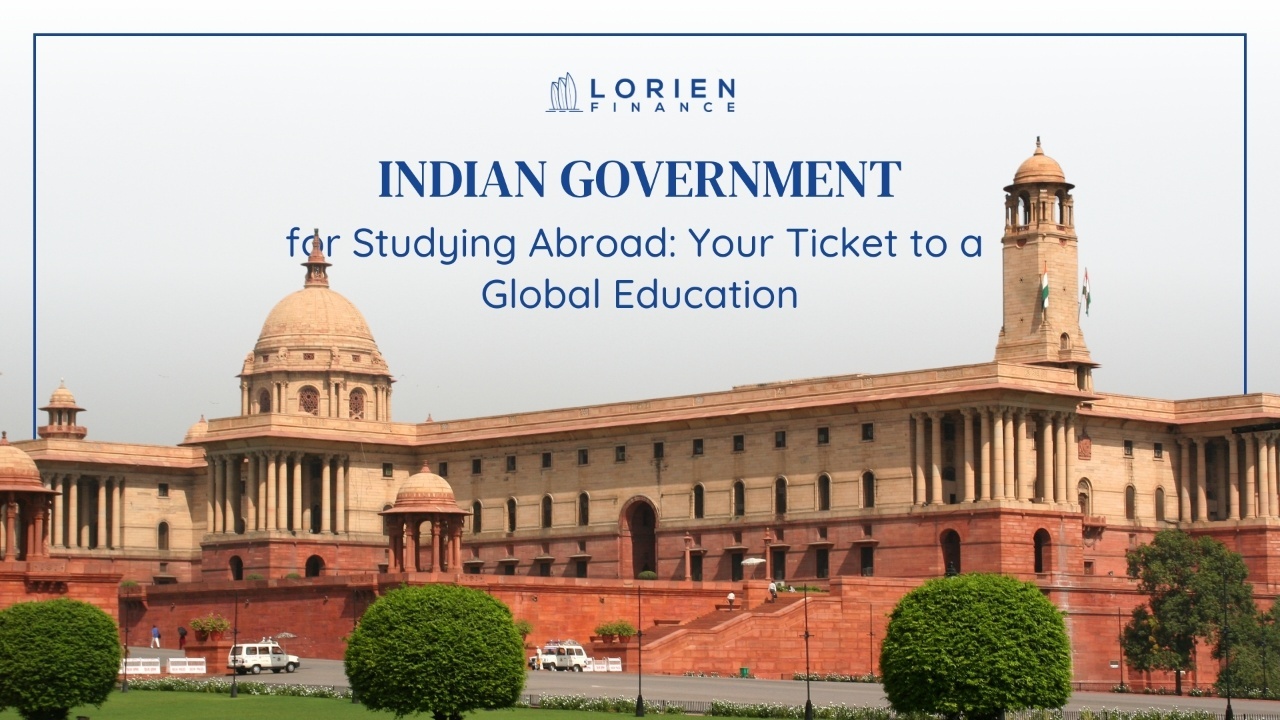Top Universities in the UAE in 2025: Your Gateway to Excellence

Do you imagine yourself sipping Arabic coffee, surrounded by the stunning architecture of AbuDhabi, while gearing up for a lecture at one of the world’s leading universities. Sounds like a dream,right? Well, for many Indian students, the United Arab Emirates (UAE) has become a topdestination for higher education, offering a blend of quality academics and vibrant culture.But with so many options, how do you choose the right university? Don’t sweat it! We’ve got thelowdown on the top universities in the UAE for 2025, based on the latest QS World UniversityRankings. Let’s dive in! Khalifa University Location: Abu Dhabi QS World University Rank 2025: 202 Why choose Khalifa University? United Arab Emirates University (UAEU) Location: Al Ain QS World University Rank 2025: 261 Why choose United Arab Emirates University? American University of Sharjah (AUS) Location: Sharjah QS World University Rank 2025: 332 Why choose American University of Sharjah? University of Sharjah Location: Sharjah QS World University Ranking 2025: 434 Why choose University of Sharjah? Ajman University Location: Ajman QS World University Ranking 2025: 477 Why choose Ajman University? Why Study in the UAE? The UAE is quickly becoming a higher education powerhouse, attracting thousands of internationalstudents every year. But what makes it so appealing? How Lorien Finance Can Help You Study in the UAE Studying abroad is exciting, but let’s be real—it can be expensive. That’s where Lorien Financecomes in! Your dream of studying in the UAE is closer than you think! With its world-class universities, topjob opportunities, and vibrant lifestyle, the UAE is becoming one of the best study destinations forIndian students. Whether you want to pursue business, engineering, AI, or media studies, the UAEhas a university for you. Let Lorien Finance help you make it happen. [Check Your Loan Eligibility Today! FAQs What are the best universities in the UAE for Indian students?Khalifa University, UAEU, and the American University of Sharjah (AUS) are top choices forIndian students due to their global rankings and scholarship opportunities. Can I work part-time while studying in the UAE?Yes! International students can work up to 15-20 hours per week with a part-time work permit What are the job opportunities after studying in the UAE?Graduates can find employment in finance, engineering, IT, healthcare, and tourism, thanks to theUAE’s booming economy. Is the UAE expensive for students?While tuition fees can be high, many universities offer scholarships, and the tax-free income makespost-study employment lucrative. How can Lorien Finance help me with my UAE study plans?Lorien Finance provides education loans, forex solutions, and expert guidance to help you financeyour studies stress-free.
Mistakes That Can Increase Your Education Loan Debt (And How toAvoid Them!)

Imagine standing at the airport, with your passport in your hand and ready to fly to your dream university. The excitement is real! But what if, a few years down the line, instead of celebrating your graduation, you’re drowning in student loan debt that just won’t seem to go away? God forbids! Sounds scary, right? Unfortunately, this is the reality for many students who, despite securing a good education loan, end up making small (but costly) education loans mistakes that can increase their education loan debt over time. Education loans are a lifesaver when it comes to funding international studies, but if you don’thandle them wisely, you could be paying way more than necessary. The good news? These mistakes are totally avoidable, and we’re here to make sure you don’t fall into these common traps. So, before you sign that loan agreement, read this blog carefully! We’re breaking down the mostcommon education loan mistakes that can increase your debt—and how you can steer clear of them. Borrowing More Than You Actually Need The Mistake It’s tempting to borrow extra money—you know, for that dream apartment, the latest gadgets, orweekend trips with friends. But over borrowing means higher interest and a longer repaymentperiod, making your debt much harder to clear. The Fix Pro Tip: Look for scholarships and part-time jobs to cover additional expenses instead of taking alarger loan! Ignoring Interest Rates & Loan Terms The Mistake Many students focus only on the loan amount and completely ignore the interest rate and repayment terms. A small difference in interest rates can lead to lakhs of extra repayment over the years. The Fix Pro Tip: Check the Annual Percentage Rate (APR) instead of just the interest rate—it includes allhidden fees and gives you the actual cost of the loan. Not Making Payments During the Moratorium Period The Mistake Many students believe they don’t have to worry about loan repayments until after graduation. While it’s true that you don’t have to pay the principal amount during the moratorium period, interest still accumulates! The longer you wait, the more interest piles up, increasing your overall debt. The Fix Pro Tip: Even paying ₹5,000–₹10,000 per month during your studies can significantly reduce yourtotal loan burden! Overlooking Processing Fees & Hidden Charges The Mistake Some lenders advertise low interest rates, but sneak in processing fees, prepayment penalties, andhidden charges that increase the actual cost of borrowing. The Fix Pro Tip: Read the fine print! Ask for a breakdown of all charges before signing the loan agreement. Not Considering Currency Exchange Rates for Foreign Loans The Mistake If you take a loan in USD, GBP, or EUR, remember that the rupee fluctuates against foreigncurrencies. If the rupee weakens, your repayments in INR will increase, making your loan moreexpensive. The Fix Pro Tip: If you’re considering USD loans, track exchange rates and convert funds strategically tosave money! Delaying Your Repayments Without a Strategy The Mistake Some students wait until the end of the moratorium period to start making payments, thinkingthey’ll have higher earnings later. But delaying unnecessarily can increase your debt by lakhs! The Fix Pro Tip: Some lenders offer discounts for early repayments. Check if your loan provider has thisoption! How Lorien Finance Can Help You Save Money on Your Education Loan At Lorien Finance, we don’t just help you secure an education loan—we help you choose thesmartest financial option so you don’t fall into unnecessary debt. What We Offer Planning to study abroad? Let Lorien Finance help you make smart financial choices! Apply for your loan today! FAQs How do I know if I’m borrowing the right amount?Create a detailed budget covering tuition, living costs, and travel expenses—then borrow onlywhat’s necessary! Should I pay off my loan early?Yes! Making extra payments or starting repayments early reduces total interest costs. Can I refinance my student loan later?Some lenders allow loan refinancing at lower interest rates. Check with your bank or financialprovider! What’s the biggest mistake students make with education loans?Not reading the fine print! Always check for hidden fees, repayment terms, and interest calculations before signing a loan agreement.
Indian Government Scholarships for Studying Abroad: Your Ticket toa Global Education

We know, you’ve spent years working hard, acing your exams, building a solid academic profile, and now, you’ve finally received that golden acceptance letter from your dream university abroad. How exciting, right? But wait—before you start packing your bags, reality strikes! The cost of tuition, accommodation, travel, and daily expenses feels like a mountain too high to climb. For many Indian students, financial constraints are the biggest roadblock between them and their study abroad dreams. But here’s the good news—you don’t always need to fund your education alone! Recognising the aspirations of bright students like you, there are numerous Indian government scholarships for studying abroad, fully and partially funded, to help make overseas education more accessible So, if you’re looking for ways to study in the UK, USA, Germany, Australia, or anywhere elsewithout breaking the bank, keep reading. We’re breaking down the best Indian governmentscholarships that can help turn your global education dream into reality! National Overseas Scholarship (NOS) – A Boost for Marginalised Communities Why This Scholarship? The National Overseas Scholarship (NOS) is designed to empower students from Scheduled Castes(SC), Scheduled Tribes (ST), and Other Backward Classes (OBC) by funding their postgraduate(Master’s & PhD) studies abroad. What It Covers Who Can Apply? How to Apply? Applications are submitted online through the National Scholarship Portal (NSP). Padho Pardesh Scheme – Interest-Free Loans for Minority Students Why This Scholarship? If you belong to a minority community (Muslims, Sikhs, Christians, Buddhists, Jains, orZoroastrians) and need financial aid to study abroad, the Padho Pardesh Scheme helps by providing interest subsidies on education loans. What It Covers 100% interest subsidy on your education loan during the moratorium period (study duration + 6months or 1 year after completion) Who Can Apply? How to Apply? Apply through the bank from which you’re taking the education loan. Dr. Ambedkar Scheme of Interest Subsidy – Supporting OBC & EBC Students Why This Scholarship? This scheme helps students from Other Backward Classes (OBC) and Economically BackwardClasses (EBC) by covering the interest on their education loans while they study abroad. What It Covers Full interest subsidy on education loans during the moratorium period Who Can Apply? How to Apply? Submit your application through the bank providing your education loan. JN Tata Endowment Scholarship – A Legacy of Financial Support Why This Scholarship? The JN Tata Endowment has been supporting Indian students since 1892, providing loan-basedscholarships with flexible repayment options. What It Covers Who Can Apply? How to Apply? Apply online through the JN Tata Endowment official website. Fulbright-Nehru Master’s Fellowships – Your Gateway to the USA Why This Scholarship? The Fulbright-Nehru Fellowship is one of the most prestigious fully-funded scholarships for Indianstudents pursuing a Master’s degree in the USA. What It Covers Who Can Apply? How to Apply? Apply online through the United States-India Educational Foundation (USIEF) website. How Lorien Finance Can Help You Study Abroad While government scholarships provide significant financial aid, they may not cover 100% of yourexpenses—especially for tuition, accommodation, and daily living costs. That’s where Lorien Finance steps in: Funding your international education might seem challenging, but with the right scholarships andfinancial support, it’s 100% possible! Whether it’s a government-funded scholarship or a tailorededucation loan from Lorien Finance, the key is to plan ahead, explore all options, and apply smartly. FAQs Can I apply for more than one government scholarship?Yes, but some scholarships may have restrictions on combining funds with others. Always check the specific terms before applying. Do these scholarships cover living expenses?Most scholarships cover tuition and travel. Some, like the Fulbright-Nehru Fellowship, also providemonthly stipends for living costs. What if I don’t qualify for a government scholarship?Don’t worry! Many private organisations and universities offer scholarships for Indian students.Plus, education loans from Lorien Finance can help bridge the financial gap. Can I apply for scholarships after getting admission?Yes, but some scholarships require you to apply before receiving your admission letter, so check the deadlines carefully.
Overcoming Difficult Education Loan Situations

So, you’ve set your sights on studying abroad—imagining the diverse classrooms, insightful lectures, and the adventure of a lifetime. But then, reality hits and brings you to the ground: financing your dream. It’s like planning a road trip with an empty fuel tank! Many aspiring students find themselves in this exact spot. The aspiration is there, but the path is riddled with financial hurdles. Let’s dive into ways of overcoming education loan challenges and, more importantly, how to conquer them. The Collateral Conundrum The Challenge: Traditional banks often require substantial collateral—like property or fixeddeposits—to secure an education loan. But not everyone has assets to pledge. The Solution: Explore lenders offering unsecured education loans. Some financial institutionsunderstand this predicament and provide loans without collateral, focusing instead on youracademic merit and the potential of your chosen course. The Cosigner Catch The Challenge: Many lenders insist on a co-signer with a strong credit history. For studentswithout such a guarantor, this becomes a significant barrier. The Solution: Look for loan providers that don’t mandate a co-signer. Some international financiersassess your profile independently, eliminating the need for a guarantor. Limited Loan Options for Specific Courses or Countries The Challenge: Some banks have restrictions on financing studies in particular countries orunconventional courses, limiting your choices. The Solution: Research and approach specialised financial institutions that offer flexible loanoptions. They often have fewer restrictions and support a broader range of study destinations andprograms. Currency Fluctuation Woes The Challenge: The ever-changing exchange rates can affect the loan amount and repayment,especially with a weakening rupee. The Solution: Consider loans that offer forex protection or opt for multi-currency loans to hedgeagainst currency risks. Staying informed about economic trends can also help in making timelyfinancial decisions. High-Interest Rates and Hidden Charges The Challenge: Some loans come with steep interest rates and undisclosed fees, making repayment burdensome. The Solution: Always compare loan offers from multiple lenders. Look beyond the interest rate;scrutinise processing fees, prepayment charges, and other hidden costs. Transparent lenders willprovide a clear breakdown of all expenses involved. Lengthy and Complex Application Processes The Challenge: The paperwork and procedural delays can be overwhelming, causing stress andpotential loss of admission offers. The Solution: Seek assistance from financial advisors or platforms that specialise in educationloans. They can streamline the process, ensuring timely approvals and disbursals. Insufficient Loan Amounts The Challenge: Sometimes, the sanctioned loan doesn’t cover all expenses, including tuition, livingcosts, and travel. The Solution: Present a comprehensive budget to your lender, detailing all anticipated expenses.Some institutions offer top-up loans or have provisions to reassess and increase the loan amountbased on genuine needs. How Lorien Finance Can Turn the Tide At Lorien Finance, we get it—financing your education shouldn’t be a Herculean task. Here’s howwe make it smoother: Embarking on your study abroad journey is thrilling. Don’t let financial hurdles dim your shine.With the right guidance and support, the world is your classroom. Your dream deserves a chance.Let Lorien Finance fuel your journey from aspiration to achievement. FAQs Can I get a study abroad loan if I don’t have a co-signer?No worries. Some financial institutions provide loans without requiring a co-signer, focusing solelyon your credentials. How do I manage currency fluctuations during repayment?Opt for loans with forex protection or multi-currency options to mitigate currency risk. Are there loans for unconventional courses or less popular countries?Yes, specialised lenders offer flexible loans covering a wide range of courses and destinations. How can I ensure there are no hidden charges in my loan?Always read the fine print and choose transparent lenders who provide a detailed breakdown of allfees and charges.
Top Countries to Pursue a Master’s Degree in 2025

So, you’ve decided to pursue a master’s degree abroad? That’s awesome! But with so many options, choosing the right country can feel like picking a series to binge-watch—exciting but confusing. Should you go for the tried-and-tested destinations like the UK and Germany? Or explore rising education hubs in Asia and the Middle East? Let’s break it down so you can make a choice from the top countries for Master’s in 2025 that suits your academic goals, budget, and future career aspirations. Germany – World-Class Education Without the Price Tag Why Germany? Popular Courses Average Tuition Fees: €250 – €3,000 per year Cost of Living: €800 – €1,200 per month United Kingdom – Fast-Track Your Career in Just One Year Why the UK? Popular Courses Average Tuition Fees: £10,000 – £38,000 per year Cost of Living: £1,200 – £1,800 per month Ireland – Europe’s Rising Star for Tech & Business Why Ireland? Popular Courses Average Tuition Fees: €10,000 – €25,000 per year Cost of Living: €1,000 – €1,500 per month UAE – The Emerging Study Abroad Giant Why the UAE? Popular Courses Average Tuition Fees: AED 40,000 – AED 100,000 per year Cost of Living: AED 3,000 – AED 6,000 per month Singapore – Asia’s Innovation & Finance Powerhouse Why Singapore? Popular Courses Average Tuition Fees: SGD 25,000 – SGD 50,000 per year Cost of Living: SGD 1,500 – SGD 3,000 per month USA – Still a Top Choice, But With Challenges Why the USA? Popular Courses Average Tuition Fees: $25,000 – $60,000 per year Cost of Living: $1,500 – $3,000 per month Canada – A Great Choice, But Proceed with Caution Why Canada? Popular Courses Average Tuition Fees: CAD 32,000 – CAD 50,000 per year Cost of Living: CAD 15,000 – CAD 25,000 per year Your perfect study abroad destination depends on your: How Can Lorien Finance Help? No matter where you choose to study, Lorien Finance has got your back! Why let financial hurdles hold you back? Reach out to Lorien Finance and take the first step towardyour global dream today! FAQs Which country is the cheapest to study for a master’s degree?Germany offers almost free education at public universities, making it the most affordable option. Which country gives the best post-study work opportunities?The UK, Ireland, and Canada offer strong post-study work visas for international students. Should I study in the US despite visa challenges?The US still has top-ranked universities and career opportunities. However, visa uncertainty meansstudents should have a backup plan. Is the UAE a good alternative to traditional destinations?Yes! The UAE is emerging as an education hub with high-quality universities and strong jobprospects.
USD vs. INR Loans: Why APR Matters for Your Study Abroad Journey

Imagine this: You’ve got your acceptance letter, your dream university awaits, and the excitement is through the roof. But then reality hits—how will you finance your education abroad? You start looking at loans, and suddenly, you’re bombarded with numbers, interest rates, hidden charges, and fancy banking terms like APR. It feels overwhelming, right? Whether your fuding is through USD vs INR loans, learn why APR matters! Well, take a deep breath—we’ve got your back. One of the biggest mistakes students make is focusing only on the interest rate while choosing aloan. But what if we told you that’s only half the story? The real game-changer is APR (AnnualPercentage Rate)—the actual cost of borrowing, including fees and other charges. This onenumber can make or break your loan decision, and today, we’re breaking it down for you. So, grab a cup of chai , and let’s simplify USD vs. INR Loans and why APR is the secret sauce tomaking the smartest financial choice for your study abroad dreams! Understanding APR: Your Loan’s True Cost, No Hidden Surprises APR isn’t just another boring financial term—it’s your best friend when comparing loans. Think of it as the MRP (Maximum Retail Price) of a loan. Just like you wouldn’t buy a gadgetwithout knowing the total cost (including taxes and delivery), you shouldn’t take a loan withoutconsidering its APR. Here’s why: USD Loans vs. INR Loans: The Ultimate Face-Off When you’re funding your education abroad, you typically have two options: Each has its pros and cons, and the APR of each loan type will vary based on multiple factors. Let’sbreak it down: Interest Rates: Who Wins? Why? International lenders have access to cheaper capital, whereas Indian lenders face higherborrowing costs. Collateral: Do You Need to Pledge Assets? Why? USD lenders cater to students who might not have strong financial backing, while Indianbanks demand security. Co-Signer: Who Has Your Back? Why? Foreign lenders want an assurance of repayment from someone in their country. Why APR is the Real Deal in Loan Comparison APR is your financial reality check. A loan with a low-interest rate but high fees can be moreexpensive in the long run. APR helps you compare loans apples to apples, so you don’t fall formarketing gimmicks. Example: At first glance, Loan A seems cheaper, but after adding hidden costs, Loan B is almost the same! Currency Fluctuations: The Wild Card Here’s something most students don’t think about: If you take a USD loan, you’ll repay in USD. Sounds obvious, right? But here’s the catch: What’s the risk? If the rupee falls from ₹87/USD to ₹95/USD, your EMI amount in INR goes up! How Lorien Finance Can Make Your Loan Journey Smoother We get it—choosing the right education loan is like playing a high-stakes game of chess. Onewrong move, and you could be paying lakhs extra! That’s where Lorien Finance steps in: Your study abroad dream shouldn’t be delayed because of financial confusion. Let’s make ithappen, stress-free! Choosing between a USD and INR loan isn’t just about interest rates. APR is your true cost ofborrowing, and ignoring it could cost you lakhs in the long run. Want expert help with your education loan? Let Lorien Finance simplify your journey so you canfocus on what matters—your future! Talk to our experts today & secure the best loan for your study abroad adventure! FAQs Are USD loans always better than INR loans?Not always! USD loans have lower rates but come with currency risks. INR loans provide stability,but at a higher cost. Will my INR loan cover all my expenses abroad?Indian banks may not cover 100% of expenses (like living costs). You might need a mix of INR andUSD loans. Can I switch from a USD loan to an INR loan later?Some lenders offer refinancing options, but not all loans are convertible. Check with your lenderbefore taking the plunge. How do I find the best loan for me?That’s where Lorien Finance comes in! We help you compare, apply, and get the best loan tailoredto your needs.
Education Loan Interest Certificate: Your Key to Tax Savings & Smart Financial Planning

If you’ve taken an education loan for your dream university abroad, you already know it’s a smartinvestment. But did you know that this investment also comes with tax benefits? Yes, you heard that right! You can save a good chunk of money every year on your tax payments—legally! Enter the Education Loan Interest Certificate—a document that not only helps you track your loan repayment but also unlocks tax savings under Section 80E of the Income Tax Act, 1961. But what exactly is it, and why is it important? Imagine this: You’ve taken an education loan, and every month, you’re diligently repaying theEMIs. But at the end of the financial year, you realise you could have saved a big amount in taxesjust by submitting this one certificate! That’s like paying extra on your Netflix subscription whenyou already had a discount code! To ensure you don’t leave money on the table, let’s break down everything you need to know aboutthe Education Loan Interest Certificate—from what it is, how to get it, and how to use it for taxdeductions. Because when it comes to finances, thoda planning aur jugaad toh banta hai, boss! What is an Education Loan Interest Certificate? An Education Loan Interest Certificate is an official document issued by your lender that details theamount of interest you’ve paid on your student loan in a particular financial year. This isn’t just a random piece of paper—it’s a powerful tax-saving tool! Under Section 80E of theIncome Tax Act, 1961, the entire interest paid on your education loan is eligible for tax deduction.The best part? There’s no upper limit on the amount you can claim! Why is the Education Loan Interest Certificate Important? How to Obtain Your Education Loan Interest Certificate Getting your interest certificate is super easy! Here’s how you can do it: Download Online (The Quickest Way!) Most banks and NBFCs allow borrowers to download their interest certificates online through theirinternet banking portal. For example: Visit Your Bank Branch (The Traditional Way!) Prefer face-to-face interaction? Walk into your lender’s branch and request the certificate in person. Make sure to carry your loan account details and valid ID proof for verification. Call Customer Support (The Lazy But Effective Way!) Some financial institutions let you request the certificate via phone banking or email support. Justcall your lender’s helpline, and they’ll send the certificate to your registered email. How to Use Your Interest Certificate for Tax Deductions Once you have the certificate, here’s how to claim tax benefits under Section 80E: How Lorien Finance Can Help You Save More! At Lorien Finance, we don’t just provide education loans—we ensure that you maximise yourfinancial benefits while repaying them. Why pay more taxes when you can save smartly? Apply for a student loan with Lorien Financetoday! (Add link on bold section) FAQs Who can claim tax benefits under Section 80E?The borrower (you) can claim deductions if the loan is taken for yourself, your spouse, children, ora student under your legal guardianship. Is there a limit on how much I can claim under Section 80E?No! You can claim the full interest amount paid—there’s no upper limit on deductions. Can I claim tax benefits on the principal loan amount?No, Section 80E covers only the interest portion—not the principal repayment. Can I claim tax benefits if my employer repays my loan?Nope! The deduction is available only to the person who repays the loan from their income. How long can I claim tax benefits on my education loan?Up to 8 years or until the interest is fully paid—whichever happens first.
Netherlands Student Visa: Procedure, Eligibility, and Documentation

“Bade bade deshon mein aisi chhoti chhoti applications hoti rehti hain, senorita!” If your dream is to study in the land of tulips, windmills, and world-class universities, then getting a Netherlands student visa is your ticket to Europe! but before you pack your bags, visa ke paper toh ready hone chahiye na, babu bhaiya? Don’t worry! We’re here to break down the Netherlands student visa guide step by step so that you can boast off in front of your friends: Rishte me toh visa tough lagta hai, par hai nahi! Why Study in the Netherlands? Before we dive into the visa chakravyuh, let’s talk about why the Netherlands is a top pick for studyabroad aspirants: Types of Student Visas for the Netherlands The type of visa you need depends on how long your course lasts: Short Stay Visa (Schengen Visa) – Courses up to 90 days Long Stay Visa (MVV) + Residence Permit – Courses over 90 days Netherlands Student Visa Eligibility Criteria Tumse na ho payega doesn’t apply here—because if you meet these requirements, you’re good togo! Required Documents for a Netherlands Student Visa Bro, in documents ke bina visa nahi milega! So, make sure you have: Your university usually applies for your visa on your behalf – but YOU need to provide thesedocuments on time. Netherlands Student Visa Application Process (Step-by-Step) Here’s how you can secure your Netherlands student visa seamlessly: Step 1: Secure University AdmissionYour university must be recognised by the Dutch Immigration and Naturalisation Service (IND) Step 2: Pay the Visa Fee (€210)Once accepted, your university applies for your MVV visa. Step 3: Submit Required DocumentsSend in all visa-related documents to your university for processing. Step 4: Wait for Approval (4-6 Weeks)The IND will process your visa application. Step 5: Collect Your MVV from the Dutch EmbassyOnce approved, collect your MVV visa stamp from your nearest embassy or VFS center. Step 6: Fly to the Netherlands & Get Your Residence Permit (VVR)After arrival, register at your local municipality and collect your Residence Permit (VVR). And voila! You’re officially a student in the Netherlands! � How Lorien Finance Helps You Get There! Securing a Netherlands student visa also means proving you have enough funds for tuition andliving expenses. But don’t stress—Lorien Finance makes it easy! Why let financial stress hold you back? Apply for your study abroad loan today with Lorien Finance! Want to check your loan eligibility? Check now! FAQs Can I work part-time on a Netherlands student visa?Yes! You can work 16 hours/week during semesters & full-time during holidays. How much bank balance do I need for a Netherlands student visa?You need to show at least €13,000 per year to cover living costs. Do I need to learn Dutch for my studies?No! Most courses are in English, but learning basic Dutch helps in daily life. Can I stay in the Netherlands after my studies?Yes! You get a 1-year search visa (Orientation Year Visa) to find a job after graduation.
Beyond Loans: Our Ancillary Services for Study Abroad Aspirants

“Paise ka jugaad ho gaya, ab baaki ka kya scene hai?” If this is your thought after securing astudy abroad loan, you’re not alone! We know that studying abroad isn’t just about arrangingfunds—there’s a whole checklist of things to sort out before you take off. That’s where Lorien Finance steps in! We don’t just help you with loans; we provide a one-stop solution for all your study abroad needs. From proficiency test discounts to placements after graduation, we ensure that your journey is smooth from day one. With ancillary services for study abroad aspirants So, sit tight and let’s walk you through how we can help beyond loans to make your study abroaddream hassle-free. Special Discounts on Proficiency Test Bookings (TOEFL & GRE) The first step to studying abroad? Acing your proficiency tests! And because we know howexpensive it can get, Lorien Finance has partnered with ETS to offer special discounts on TOEFL &GRE bookings. Why pay full price when you can save? If you’re preparing for these exams, book through us andget an exclusive discount! Insurance – Because Your Safety Comes First You’re about to start a new adventure, but life is unpredictable. Medical emergencies, lostbaggage, or even trip cancellations can happen. That’s why we offer: With the right insurance, you can travel stress-free knowing you’re covered. Forex Services – Get the Best Exchange Rates Let’s be real—foreign exchange rates matter! You need money that works globally, so we offer: Why risk last-minute airport forex rates? Plan ahead with us! GIC for Canada – Hassle-Free & Fast Processing If you’re heading to Canada, you already know about the Guaranteed Investment Certificate (GIC)requirement for your study permit. Don’t stress—we help with: No delays, no confusion—just a straightforward GIC process with Lorien Finance! International SIM Cards – Stay Connected from Day 1 The last thing you want after landing is a “No Network” message on your phone. We help you get: International Debit & Credit Cards – Smart Spending Abroad Say goodbye to unnecessary forex conversion charges! We offer: Make transactions abroad seamless and secure with the right banking solution. Accommodation Assistance – Your Home Away from Home Finding the right place to live abroad can be stressful. We make it simple: Say goodbye to endless house-hunting and focus on your studies! Placement Assistance – Because Studying is Just the First Step! Studying abroad is great, but what next? Getting placed in a top company is the ultimate goal! Weassist with: With Lorien Finance’s placement support, you’re not just studying abroad—you’re setting up yourcareer abroad! We believe that studying abroad is more than just securing a loan—it’s about the entire journey.From pre-departure planning to settling into your new life and even landing a job, we ensure thatyou never feel lost in the process. At Lorien Finance, we don’t just finance your dreams—we make them hassle-free and achievable.Looking for seamless study abroad solutions? Let’s get started today! FAQs Why do I need Lorien Finance’s ancillary services if I already have my loan approved?Because studying abroad isn’t just about funding! You’ll need forex, accommodation, SIM cards,insurance, and even job placements—we make everything seamless. Do I need health insurance before flying abroad?Yes! Most universities require international students to have health insurance before enrollment.We help you get the best coverage. How do I arrange accommodation before I arrive?We offer secure housing options near your university—whether you want a dorm, shared flat, orprivate stay. Are Lorien Finance’s services available for students worldwide?Yes! Our services cater to students going to the US, UK, Canada, Australia, Europe, and beyond.
Accommodation Hacks: Save Money Without Sacrificing Comfort

So, you’ve cracked your exams, secured your dream university, and now you’re about to take off onyour study abroad adventure. But wait—have you checked the rent prices? That cozy shoeboxsized room in London, New York, or Sydney might just cost more than your entire semester’s tuition! We get it. Renting a place abroad can be stupid expensive, but with a few clever budget accommodation hacks (and maybe some solid negotiation skills), you can live comfortably without going broke. Let’s dive into the ultimate hacks to find a comfortable, affordable home away from home. Ditch the Solo Life—Get Roommates & Split the Bill Unless you enjoy talking to your reflection, shared accommodations are the way to go. Hack: More roommates = less rent. Splitting rent, utilities, and even groceries with housemates can save you hundreds of dollars everymonth. Where to find roommates? Pro Tip: Find roomies with similar lifestyles. You don’t want to be the one waking up at 7 AM whileyour roommate is still blasting Punjabi beats at 3 AM. Bonus Hack: Some landlords offer discounts for groups renting together—so gather your squadbefore signing the lease! University Dorms: The OG Student Accommodation Living on campus? It’s not just about rolling out of bed five minutes before class! Hack: University dorms might seem pricier at first, but they save you money in the long run byeliminating daily commuting costs (which can be crazy expensive). Most dorms include utilities,internet, and even meal plans in the rent. Pro Tip: Homestays: Cheap Rent & Home-Cooked Food If you’re not ready to adult full-time yet, consider homestays. You live with a local family, get aprivate room, and sometimes even meals included. Plus, no landlord chasing you for rent everymonth! Yes, you’ll have curfew vibes again, and your host family might judge your eating habits (No, Aunty,I don’t want salad, just extra fries please). But hey, free food and cultural immersion? Worth it! Pro Tip: Negotiate Like a Desi Parent in a Street Market Did you know you can bargain with landlords just like you do in Sarojini or Colaba Causeway? How to do it right? Short-Term Rentals First, Long-Term Lease Later Landlords love to trap desperate students into long-term leases. Don’t fall for it! Book short-termhousing first, explore the area, and then commit to a place. Reality Check: That “perfect” apartment you booked from India? Turns out it’s next to a nightclubwith bass so loud you can feel it in your soul. That’s why seeing a place IRL before signing is amust Pro Tip: Furnished vs. Unfurnished – Do the Math Some apartments come unfurnished, meaning you’ll have to buy everything from a bed to afridge. Others come fully equipped, but might charge a little extra in rent. What’s cheaper? Say Yes to Student Discounts & Housing Grants Many universities offer housing grants & financial aid for international students. You just have toASK! Pro Tip: Banks abroad sometimes offer rent discounts if you sign up for a student savings account.Ask your bank before paying full rent! Studying abroad is already a big investment, but with these budget accommodation hacks, you won’t have to live off instant noodles just to afford rent. Be smart, plan ahead, and choose wisely—because you deserve a comfortable space without breaking the bank. While you focus on settling in, Lorien Finance will take care of your finances with loans that make studying abroad stress-free. Ready to take off? Let’s make your dream a reality, together! Now go find your home away from home—without breaking the bank!
